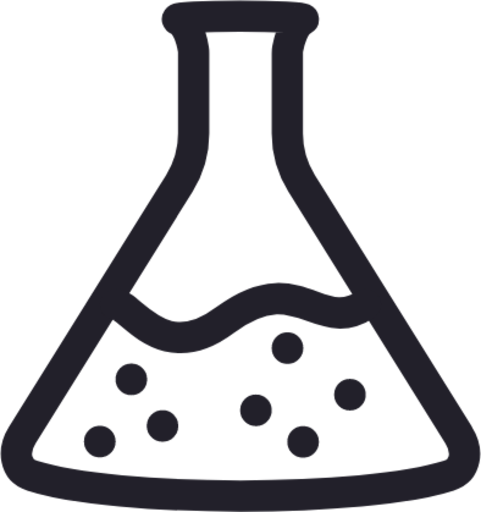Introduction
Molarity is one of the most important concepts in chemistry. It helps in determining the concentration of a solute in a solution. The formula for molarity is simple: it’s the number of moles of solute per liter of solution (M = moles of solute / liters of solution). Understanding this formula can help you calculate the strength of chemical solutions quickly and accurately.
In this article, we’ll explain how to use the molarity formula with real-life examples to make it easier to grasp. Whether you’re preparing for an exam or just looking to understand chemistry better, this guide will walk you through the steps.
Fun Fact
Molarity is often referred to as “concentration” in everyday chemistry labs!
What Is Molarity?

Molarity (M) is defined as the number of moles of solute dissolved in one liter of solution. It helps in determining how concentrated a solution is. This calculation is essential for various chemistry applications
Molarity Formula
The formula for molarity is:
\[ Molarity \, (M) = \frac{\text{moles of solute}}{\text{liters of solution}} \]This formula is used when you need to calculate the molarity of a solution. It can also be applied to solve other chemistry-related problems.
Key Components of Molarity Calculation
| Component | Definition | Unit |
|---|---|---|
| Moles of Solute | Amount of substance dissolved in the solvent | Moles (mol) |
| Volume of Solution | Total volume of the solution in which solute is dissolved | Liters (L) |
| Molarity (M) | Concentration of the solute in the solution | Moles per Liter (mol/L) |
How to Use the Molarity Formula
Follow these steps when using the molarity formula:
- Find the moles of solute: Start by determining the number of moles of the solute.
- Measure the volume of the solution: Ensure that you measure the solution in liters.
- Apply the formula: Divide the number of moles by the volume in liters to find the molarity.
Now, let’s break down how to apply the molarity formula using examples for better clarity.
Example 1: Finding Molarity
If you dissolve 2 moles of sodium chloride (NaCl) in 4 liters of water:
- M = 2 moles ÷ 4 liters
- M = 0.5 M
This means the molarity of the solution is 0.5 M.
Example 2: Finding Moles of Solute
Sometimes, you might know the molarity and the volume but need to calculate the moles of solute. Here’s how:
For a 0.75 M solution of NaCl in 3 liters of water:
- Moles of solute = Molarity × Volume
- Moles of solute = 0.75 M × 3 liters
- Moles of solute = 2.25 moles
So, the solution contains 2.25 moles of NaCl.
Example 3: Finding Molarity with Smaller Quantities
You have 0.5 moles of glucose (C₆H₁₂O₆) dissolved in 250 mL of water. To calculate the molarity:
- First, convert 250 mL to liters: 250 mL = 0.25 liters.
- Now, use the molarity formula:
- M = 0.5 moles ÷ 0.25 liters
- M = 2 M
The molarity of the glucose solution is 2 M.
Example 4: Calculating Moles from Known Molarity
Suppose you need to prepare 1 liter of a 3 M H₂SO₄ (sulfuric acid) solution. How many moles of H₂SO₄ are needed?
- Use the formula for moles:
- Moles = Molarity × Volume
- Moles = 3 M × 1 liter
- Moles = 3 moles
You would need 3 moles of H₂SO₄ to make the solution.
Example 5: Diluting a Solution and Finding the Final Molarity
If you dilute 0.1 moles of potassium hydroxide (KOH) to 500 mL of solution, what’s the final molarity?
- Convert 500 mL to liters: 500 mL = 0.5 liters.
- Now apply the formula:
- M = 0.1 moles ÷ 0.5 liters
- M = 0.2 M
The molarity of the diluted KOH solution is 0.2 M.
Other Ways to Find Molarity Easily
While calculating molarity manually is helpful for understanding, it can be time-consuming in more complex scenarios. Using an online molarity calculator is a quicker and more accurate way to find the molarity of a solution. You can find reliable tools, such as Molarity Calc, which simplifies the entire process and helps avoid calculation errors.
Why Is Molarity Important?
Understanding molarity is essential for many chemistry experiments because it provides a clear measure of the concentration of solutes in a solution. It allows chemists to predict how solutions will react when mixed. For example, when two solutions are combined, their molarities can determine whether a chemical reaction will occur and in what proportion. In titration experiments, molarity helps calculate the exact amount of reactants needed to reach the equivalence point. For accurate results in the lab, knowing the molarity of your solution ensures precise measurements, which are critical in reactions where concentration affects the outcome, such as in rate of reaction, pH balance, or when preparing buffers.
Conclusion
Molarity simplifies the process of calculating the concentration of solutions. With a clear understanding of the molarity formula and examples, solving chemistry problems becomes much easier.


Leave a Reply